Welcome to our thrilling exploration of the top 10 deadliest spiders in the world! These eight-legged creatures have fascinated and terrified humans for centuries. Spiders are truly remarkable creatures, from their venomous bites to their intricate webs.
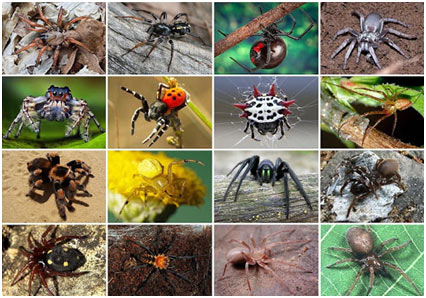
So, without further ado, let’s dive into the fascinating world of arachnids and uncover the deadliest spiders on the planet.
1. Brazilian Wandering Spider
The Brazilian Wandering Spider takes the top spot on our list. Not only does it possess a potent neurotoxin, but it is also known for its aggressive behavior.
- Scientific name: Phoneutria
- Domain: Eukaryota
- Family: Ctenidae
- Kingdom: Animalia
- Order: Araneae
If you get bitten by a Brazilian wandering spider, (along with other members of the genus, they are often referred to as Brazilian wandering spiders.) Its bite can cause severe symptoms, including increased pulse, blood pressure, and respiratory rate; extraordinary pain; penile erection that lasts for several hours; and, in several documented cases, death.

- Found in South and Central America, this spider’s bite can cause severe pain, paralysis, and even death if left untreated.
Treatment: Local anesthetic infiltration at the bite site can control pain. A polyvalent antivenom (Instituto Butantan, São Paulo, Brazil) is available for cases of severe envenomation from P. nigriventer. If you are far from Brazil, this might be coordinated with your local poison center.
2. Sydney Funnel-web Spider
Next up is the Sydney Funnel-web Spider, native to Australia. Its venom contains a potent neurotoxin that can cause muscle spasms, difficulty breathing, and even heart failure. Fortunately, antivenom is available, and fatalities from this spider’s bite have significantly decreased in recent years.
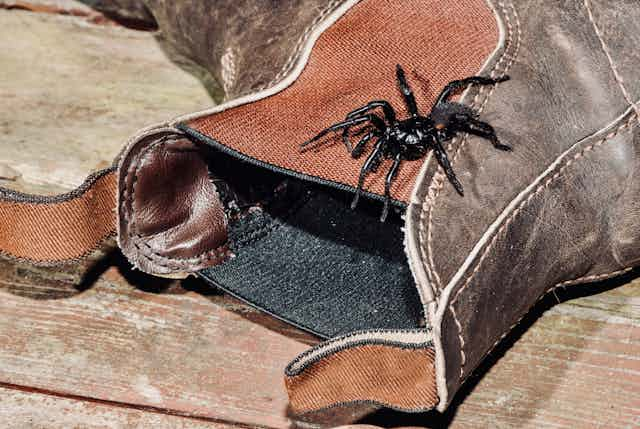
If you get bitten by a Sydney funnel-web spider, area affected by the bite may become deeper. Additional symptoms such as fever, chills, and other signs of additional organ system involvement may develop. Deep scarring may occur and surgery may be needed to improve appearance of the scar.
- Scientific name: Atrax robustus
- Domain: Eukaryota
- Family: Atracidae
- Kingdom: Animalia
- Order: Araneae
- Phylum: Arthropoda
3. Black Widow Spider
The Black Widow Spider is notorious for its shiny black body and distinctive red hourglass-shaped marking. Found in various parts of the world, its venom is neurotoxic and can cause severe muscle pain, abdominal cramps, and in rare cases, death. However, fatalities are uncommon due to the availability of antivenom.
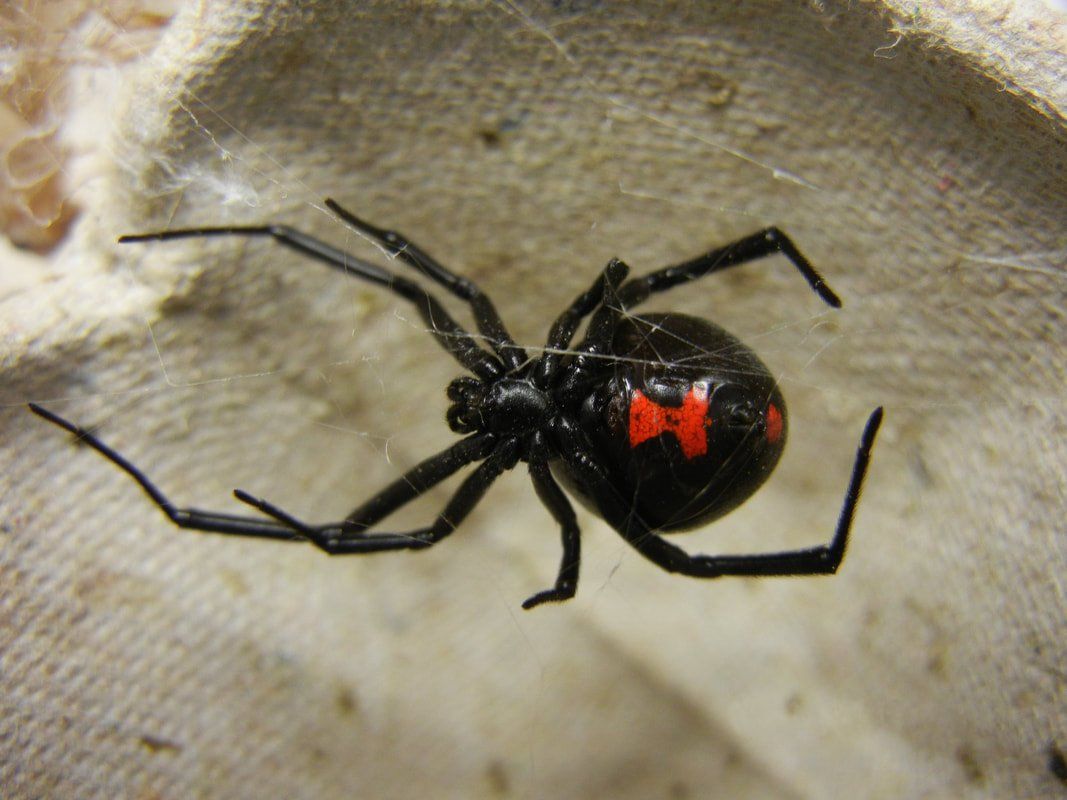
After being bitten by a black widow spider, you may have painful swelling around the bite. You may also notice cramps, muscle spasms, and achiness, and you may be sick to your stomach. These symptoms may get worse for up to about 12 hours after you were bitten. Then they should start to go away.
- Lifespan: Southern black widow: 3 years
- Scientific name: Latrodectus
- Domain: Eukaryota
- Family: Theridiidae
- Infraorder: Araneomorphae
- Kingdom: Animalia
4. Redback Spider
Similar to the Black Widow, the Redback Spider is found in Australia and belongs to the same family. Its venom affects the nervous system, causing symptoms such as pain, sweating, and nausea. While deaths are rare, antivenom is readily available for those who require treatment.
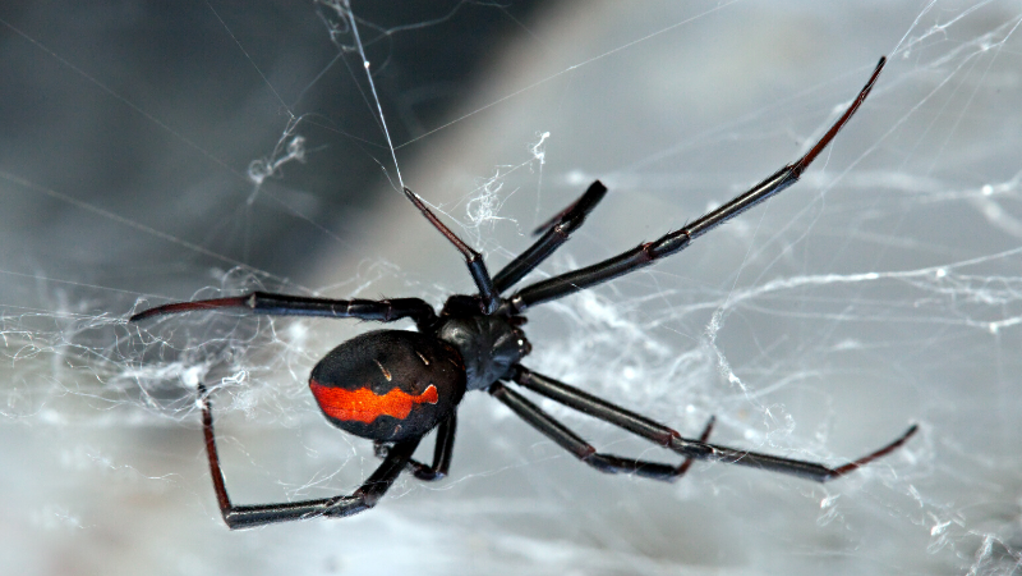
If you get bitten by a redback spider; A bite from this spider can be life-threatening. A bite will usually cause severe pain, sweating, vomiting, difficulty breathing and muscle twitching.
- Scientific name: Latrodectus hasselti
- Domain: Eukaryota
- Family: Theridiidae
- Kingdom: Animalia
- Order: Araneae
- Phylum: Arthropoda
5. Six-eyed Sand Spider
The Six-eyed Sand Spider, native to deserts in Southern Africa, possesses a potent cytotoxic venom that destroys cells and tissues. While bites are rare, the venom can cause severe necrotic wounds and, in some cases, systemic effects that require medical attention.

- Scientific name: Sicarius hahni
- Family: Sicariidae
Species of Hexophthalma produce venom that can have necrotic (dermonecrotic) effects, capable of causing serious or even life-threatening wounds, particularly if the wound becomes infected or the venom spreads in the body.
6. Brazilian Wandering Spider
Brazilian wandering spiders ranks among the world’s most venomous arachnids. Its venom, rich in potent neurotoxins, can cause symptoms such as pain, swelling, muscle spasms, and even life-threatening complications.
This spider poses a considerable risk to humans, so exercising caution around them is crucial.
Typically, these spiders conceal themselves in dark, secluded areas during the day and emerge to hunt for prey under the cover of night.

- Scientific name: Phoneutria
- Domain: Eukaryota
- Family: Ctenidae
- Kingdom: Animalia
- Order: Araneae
If you get bitten by a Brazilian wandering spider, severe symptoms, including increased pulse, blood pressure, and respiratory rate; extraordinary pain; penile erection that lasts for several hours; and, in several documented cases, death.
7. Brown Recluse Spider
The Brown Recluse Spider, found in North America, has a venom that can cause necrotic wounds, leading to tissue death. While bites are relatively uncommon, they can result in severe pain, skin ulcers, and in rare cases, systemic symptoms.
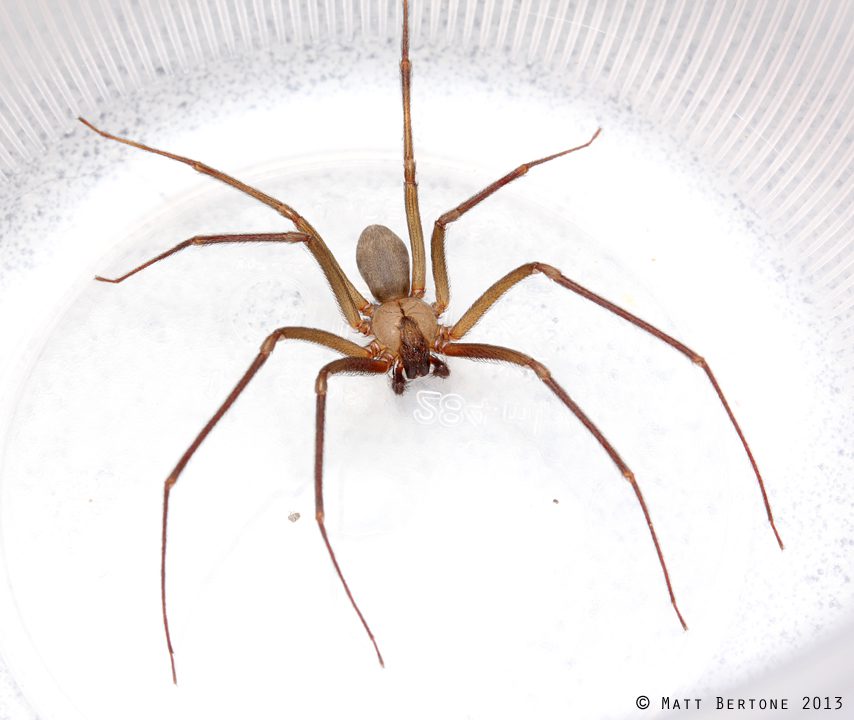
If you get bit by a brown recluse spider, you can experience fever, convulsions, itching, nausea and muscle pain. In extreme cases, brown recluse spider bites may result in necrosis, or the death of living cells. In this case, painful open wounds appear and do not heal quickly. Wounds will appear purple and black at this time.
- Lifespan: 1 – 2 years (Adult)
- Class: Arachnida
- Family: Sicariidae
- Genus: Loxosceles
- Kingdom: Animalia
- Order: Araneae
- Phylum: Arthropoda
8. Mouse Spider
Native to Australia, the Mouse Spider is often mistaken for the highly venomous Funnel-web Spider. While its venom can cause severe illness, including sweating, vomiting, and high blood pressure, no deaths have been reported in recent years.
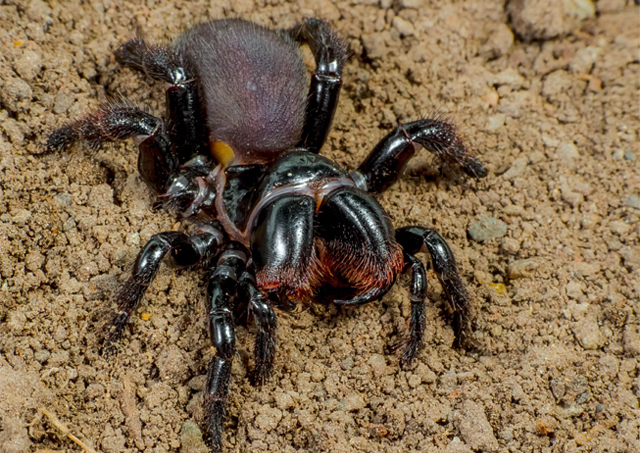
Like other trap-door spiders, Mouse Spiders live in burrows in the ground. They are common in many suburbs, but are hard to find because their burrows are well hidden. They get their common name ‘Mouse Spider’ because it was incorrectly thought that this spider could dig a mouse-like burrow up to 1 metre deep.
- Scientific name: Missulena
- Family: Actinopodidae
- Order: Araneae
9. Chilean Recluse Spider
The Chilean Recluse Spider, also known as the South American Recluse Spider, has a venom that can cause necrotic wounds. While bites are relatively rare, they can result in severe tissue damage and require medical attention.
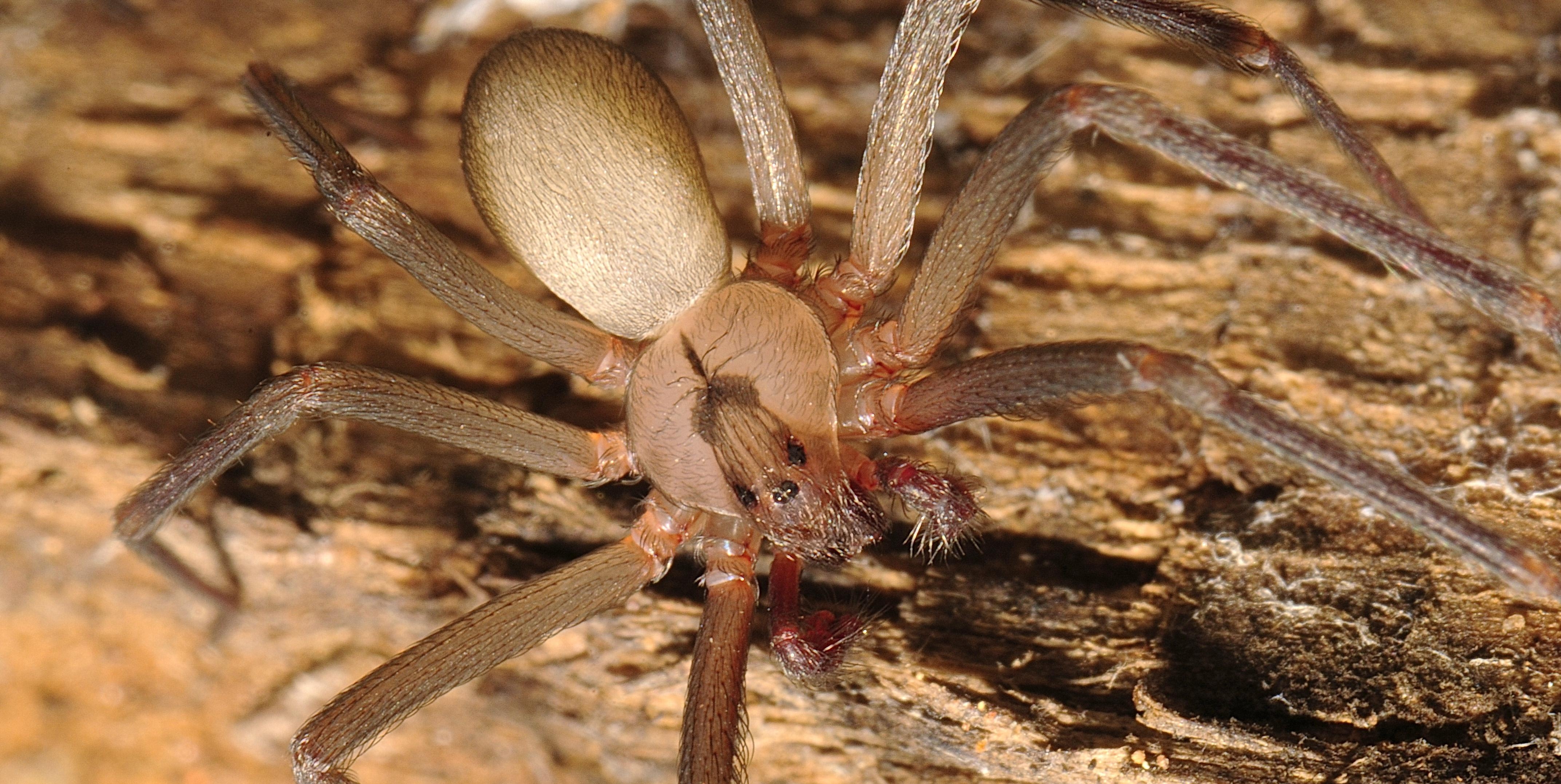
- Scientific name: Loxosceles laeta
- Order: Araneae
The Chilean Recluse spider ranges in size but can reach almost two inches in length which includes their legs. Most recluse spider species are brown in color with distinct markings on the thorax in the shape of a violin
10. Yellow Sac Spider
Lastly, we have the Yellow Sac Spider, found in various parts of the world. While its venom is not as potent as some of the other spiders on this list, its bite can cause painful symptoms, including swelling and redness.
- Scientific name: Cheiracanthium inclusum
- Family: Cheiracanthiidae
- Kingdom: Animalia
- Order: Araneae
- Phylum: Arthropoda
Yellow Sac Spiders are not poisonous, but they are venomous arachnids that tend to bite humans if they feel threatened or are surprised by a person’s sudden movements. They’ve also been known to bite for no apparent reason. Although they inject venom when they bite, yellow sac spiders aren’t deadly.

Conclusion
Remember, encountering these spiders in the wild is rare, and most bites occur when humans unintentionally disturb their habitats. If you ever come across a spider and are unsure of its toxicity, it is best to exercise caution and seek medical attention if bitten.
So there you have it, the top 10 deadliest spiders in the world. These fascinating creatures remind us of the diversity and complexity of the natural world. While they may evoke fear, it’s important to appreciate their role in maintaining the delicate balance of ecosystems.




